Case Study
Crunch
Before
After
About the Client and Project
42Crunch was founded by veterans of the security and API management industry who recognized that the traditional approach to protecting APIs was simply not scalable. APIs are the core building block of every enterprise’s digital strategy and are driving internet traffic growth1, yet they are also the number one attack surface for hackers2.
Traditional application security solutions such as web application firewalls (WAF) and static and dynamic testing tools (SAST/DAST) are not designed to secure APIs nor even are API gateways. 42Crunch is filling this security gap by providing API security specific tools designed to automate and scale the protection of APIs for businesses large and small.
Project Duration
Underway 7+ Months
As per Requirements
Background and Strategic fit
42Crunch provides comprehensive API security solutions, focusing on securing APIs throughout their lifecycle. With increasing reliance on APIs in digital transformation, the platform addresses critical security gaps by offering automated testing, protection, and governance. Its strategic fit lies in its ability to serve industries with high security requirements, such as finance, healthcare, and telecommunications. By integrating security into the API development process, 42Crunch helps organizations mitigate risks, ensure compliance, and protect against evolving cyber threats, making it a vital tool for modern enterprises.
Challenges faced by Crunch:
- The rapid growth of cyber threats targeting APIs requires constant innovation and updates to stay ahead of malicious actors.
- As a specialized service, 42Crunch must educate organizations about the importance of API security and differentiate itself from other security solutions.
- Integrating security tools seamlessly with existing software development workflows and platforms can be challenging for enterprises.
- Ensuring its solutions scale across various industries with different security needs and infrastructure demands continuous adaptation.
42Crunch called on Devinlabs to address key challenges, improve the platform’s usability, and enhance the overall customer experience. The project focused on streamlining API security processes, increasing user engagement, and ensuring seamless integration with development workflows. The goal was to drive growth, strengthen 42Crunch’s position as a leader in API security solutions, and ensure businesses can securely integrate and manage their APIs with ease, ultimately protecting them from evolving cyber threats and vulnerabilities in the digital ecosystem.
Services Offered

API Security Testing
Automated security testing throughout the API lifecycle to identify vulnerabilities and prevent security issues early in the development process.

API Security Protection
Real-time protection and monitoring of APIs to detect and mitigate threats during runtime, ensuring continuous security.
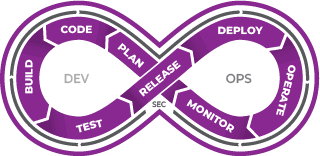
API Design & Governance
Tools for designing secure APIs and ensuring they comply with industry security standards and regulations.
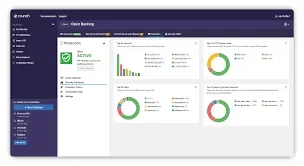
API Security Automation
Automated workflows for integrating security checks into CI/CD pipelines, making security a continuous part of the development process.
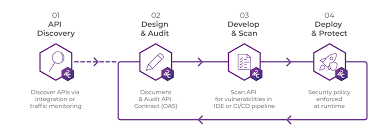
API Monitoring & Analytics
Advanced analytics and monitoring capabilities to track API activity, detect anomalies, and provide detailed reports for better security insights.

Compliance Assurance
Features to help organizations meet security and compliance requirements, such as GDPR, PSD2, and other industry-specific regulations.
Challanges
01
Adapting to Rapidly Evolving Threats
- As cyber threats become increasingly sophisticated, 42Crunch must continuously innovate and update its solutions to protect APIs from emerging vulnerabilities and attacks.
02
Market Awareness and Education
- Many organizations still underestimate the importance of API security. 42Crunch must focus on educating potential customers about the critical need for robust API protection, particularly as APIs are integral to modern software systems.
03
Integration with Existing Infrastructure
- Ensuring seamless integration with diverse development environments, tools, and infrastructure can be complex, as organizations may have varied technical stacks and security practices.
04
Scalability and Flexibility
- As businesses scale and expand their use of APIs, 42Crunch must ensure its platform is adaptable and scalable to meet the evolving needs of both small startups and large enterprises.
05
User Adoption and Engagement
- Encouraging companies to fully integrate security protocols into their API development processes can be a challenge, as security often takes a backseat to other development priorities.
06
Competition in a Crowded Market
- The API security space is growing rapidly, with multiple players offering similar services. Differentiating 42Crunch’s offerings and proving its unique value proposition remains a challenge in a crowded marketplace.


Courier API Integration
User Flow
User Flow in website design refers to the sequence of steps a user takes to accomplish a task or reach a goal. It involves guiding users seamlessly through various pages and interactions to ensure a smooth and intuitive experience. By optimizing user flow, designers enhance usability and increase user engagement on the website.
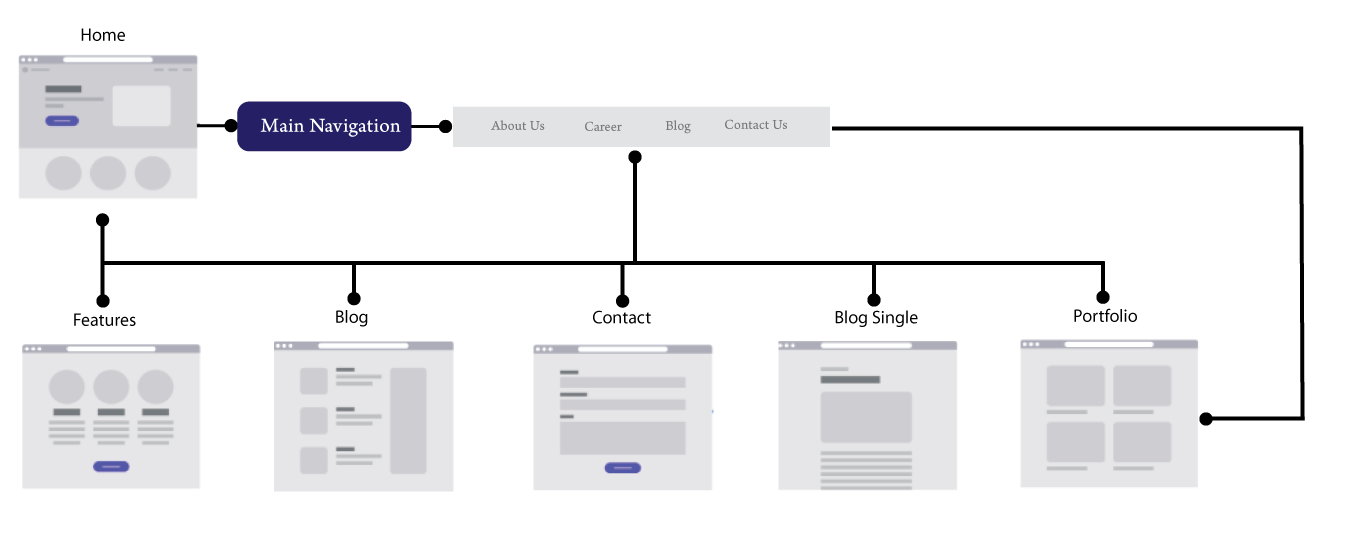
Optimizing UX: Crafting a Research Plan
Crafting an effective research plan for optimizing user experience involves defining clear objectives, selecting appropriate methodologies, and gathering relevant data. By meticulously planning each step, designers can gain valuable insights into user behavior and preferences, informing iterative improvements to the product. A well-executed research plan is instrumental in creating user-centric designs that resonate with the target audience.

Design System & Style
We developed a design system to enhance consistency and streamline the client’s workflow, saving time during feature development. This initiative aims to elevate the website’s overall process and user experience, ensuring efficiency and cohesion across all aspects of design and implementation.

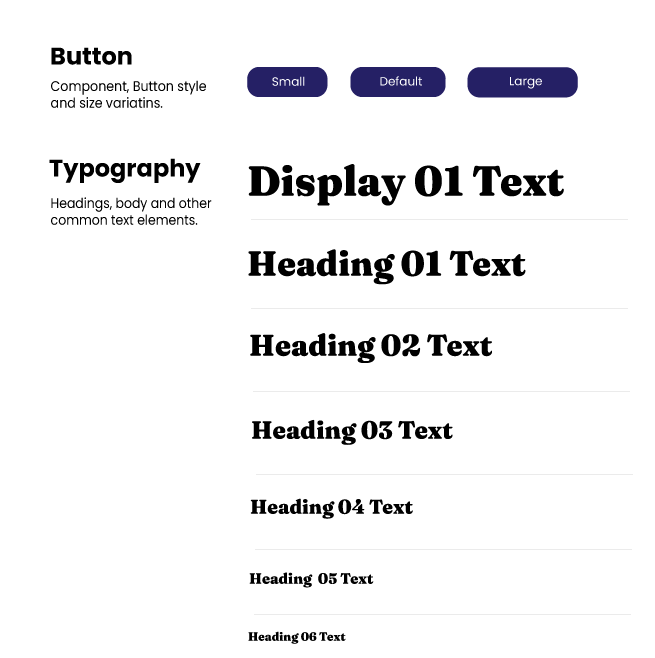
Demos And Pages
Focusing on security challenges often drives innovation and efficiency at 42Crunch, maintaining its agile and adaptable approach. As a result, our team is composed of highly skilled professionals who are not only experts in API security but also thrive on problem-solving and creative solutions, pushing the boundaries of what’s possible in API protection due to the unique demands of our platform.
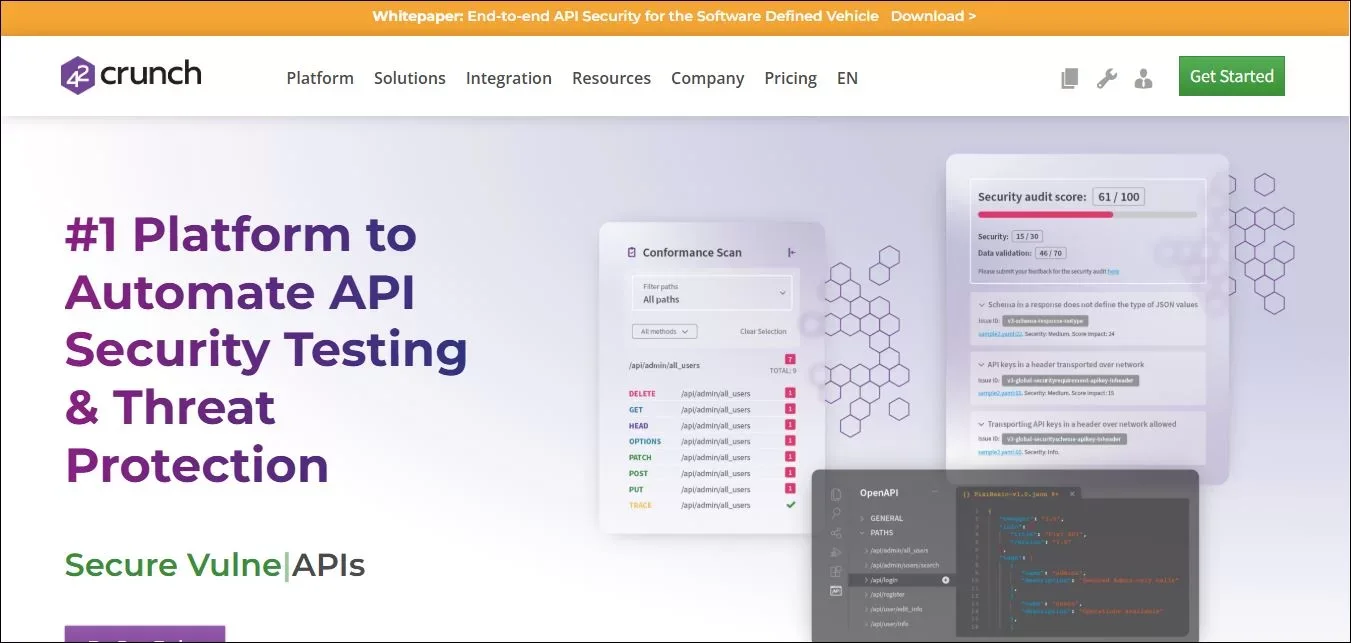
Home
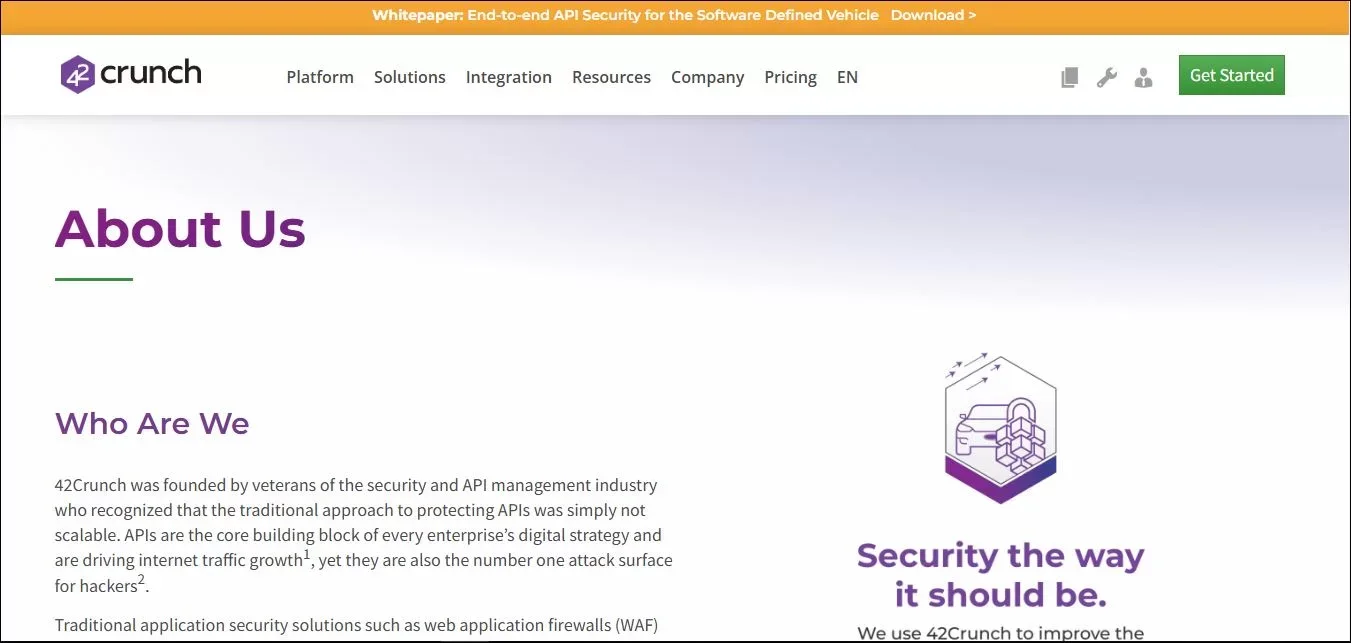
About Us
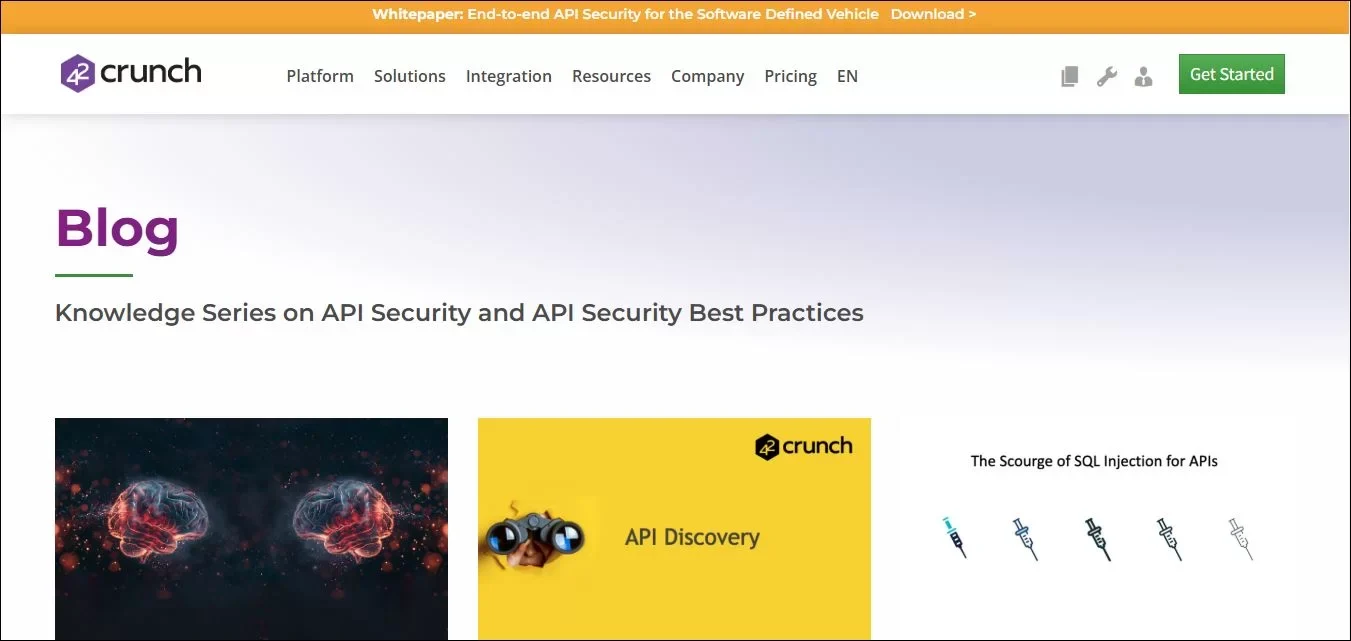
Blogs
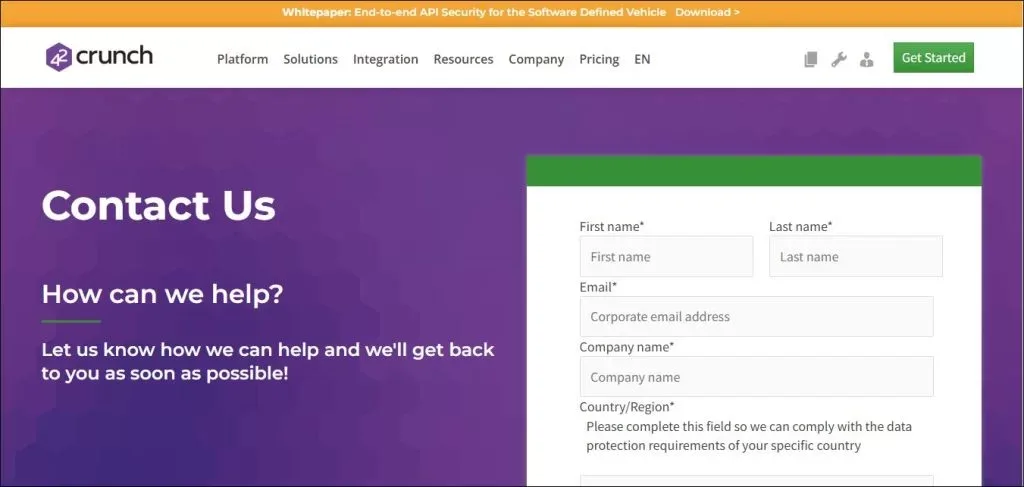
Contact Us

LET'S CHAT

